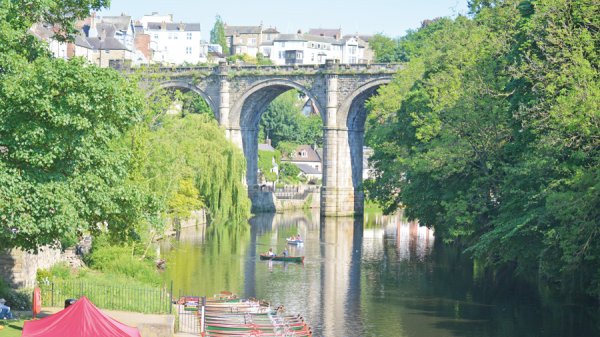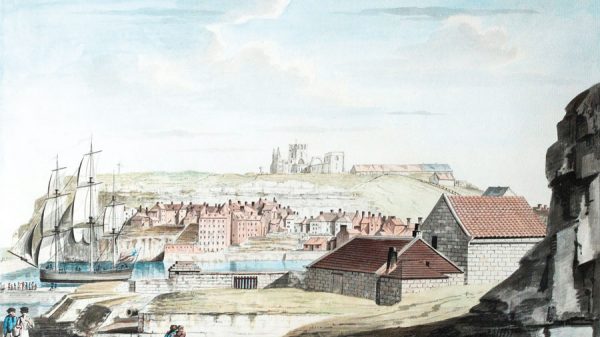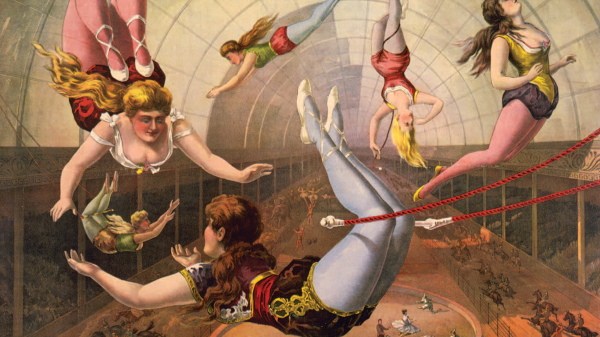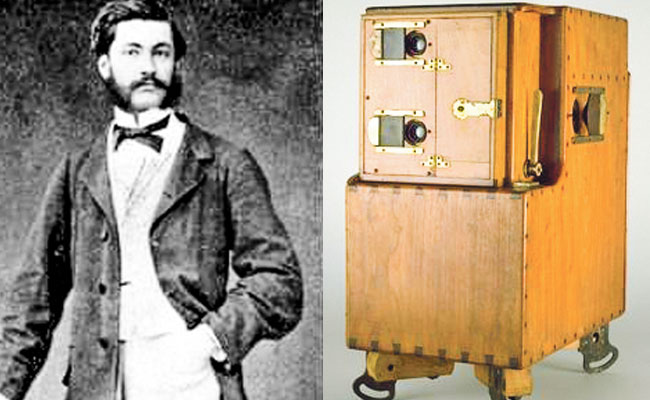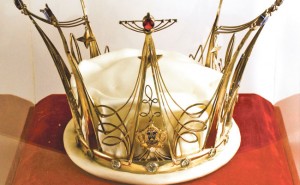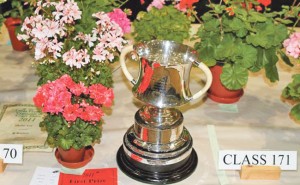Quarry Hill is now a cultural quarter of Leeds containing The Northern Ballet, West Yorkshire Playhouse and the B.B.C but in the 1600s it was notorious for its plague ‘cabins’ where the poor, suffering from bubonic plague, would be taken to in order to keep them from infecting others.
Later in the 1840s body snatching was quite popular being so close to the parish church. Sometimes, bodies would find their way to the eminent surgeon, William Hey for his anatomy classes. Quarry Hill was also the haunt of Mary Bateman the notorious murderess commonly known as the ‘Yorkshire Witch’ who delighted in poisoning folk. These were just some of the ‘delights’ Quarry Hill in Leeds had to offer over the centuries. The area, one of the most inhabited in Leeds, once had some of the most appalling slums anywhere but during the Georgian period, it became the ‘in’ place to go to ‘take the waters’ at numerous spas. In those ‘good old days’ the spas were supposed to help with rickets and rheumatism.
On a lighter note, Quarry Hill was the birthplace of the Victorian actress, Adelaide Neilson in 1848. She was born Elizabeth Ann Brown at 35, St Peter’s Square, her mother at the time being unmarried. Young Elizabeth spent much of her childhood in Guiseley as Elizabeth Ann Bland after her mother had married Samuel Bland.
When she was about fifteen she went to London, and because of her good looks she managed to get employment as a member of the ballet at a London theatre. She married Philip Henry Lee in 1864. Her career took off and she appeared in many provincial theatres as well as in London and in America. Her career in the theatre lasted about fifteen years, and tragically ended whilst riding in the Bois de Bologne in Paris in August 1880. She was only thirty-two. Adelaide Neilson was brought back to England and buried in Brompton Cemetery in London.
Charles Jenkinson’s Ambitions For Better Housing
Several clergymen have left their mark on Leeds, in particular the reverend Charles Jenkinson. After gaining experience in the East End of London he was appointed Vicar of the combined parishes of St Barnabas and St John in Holbeck in Leeds in 1927. Three years later in 1930, he was elected Councillor for the ward of North Holbeck. It was Jenkinson’s ambition to make a better life for the ‘slum dwellers’ of Leeds by sweeping away the unsanitary dwellings and replace them with decent living conditions.
Jenkinson became acquainted with architect and director of housing, R.A.H Livett and they based their design of what would be Quarry Hill flats on the Karl Marx Hof, a massive block of flats in Vienna, after a delegation was sent to look at them in 1932. These flats contained facilities for tenants, such as laundries, shops, kindergartens, courtyards, playgrounds and gardens.
Another delegation including Livett was sent to look at an estate in Drancy in France to look at a revolutionary new construction technique designed by Eugene Mopin, who was commissioned to come up with a plan for a structural design for Quarry Hill flats. The technique comprised of a steel frame encased in pre-cast concrete units and were then filled with concrete. All this was to be made at the Quarry Hill site in a purpose built factory.
Originally the plan was to have eight hundred dwellings, but the flats were increased in height and the dwellings to nine hundred and thirty eight consisting of between one and five bedrooms. The original design included a community hall able to accommodate five hundred and twenty people and included a stage. Other inclusions were to have been two swimming pools, one indoors and one outdoors and also a wading pool. There were to have been playgrounds and lawns. The original plan was changed slightly and the pools were replaced by a bowling green and tennis courts, but never built. There was of course a communal laundry including driers.
Waste disposal also had to be considered and after Livett had visited France it was decided to employ the ‘Garchey’ system of disposal. The waste was stored in a receptacle under the kitchen sink and when there was a convenient amount it was flushed with the water from the sink and into the waste stack and then onto a central processing plant where it was dried and then burnt in an incinerator. The idea was to use this to heat the swimming pools but this was never put in place. The system also had its negative side, there was fracturing in the stacks and this caused bad smells and also difficulty in cleaning problems under sinks. However, on a positive note, the Karl Marx Hof flats in Vienna did not have lifts, but Quarry Hill flats would have eighty – eight lifts each capable of carrying two passengers and obviously an improvement on Vienna’s flats.
At last, in 1938 people started to move into the flats. Life was so different and better now for those who had been living in unsanitary and unacceptable conditions. These brand new homes had the benefit of spacious living with areas for the children to play in. Other benefits were shops, and also nearby was ‘Tommy’ Tomasso’s shop. People might also remember Emmet’s fish and chip shop too.
27th June 1939 The Duke of Kent visiting Quarry Hill flats with civic digniitaries. Although the first stage of the construction had bee completed in March, 1938 other parts of the flats were still under construction.
The ‘Houses’
The dwellings were divided into separate ‘houses’ much like some schools had, and names of prominent residents were given to the flats. ‘Neilson House’ after the aforementioned actress was just one of several. There was also ‘Oastler House’ after the great 19th century reformist, Richard Oastler who wrote letters to the ‘Leeds Mercury’ describing the appalling conditions that children were subjected to in the factories, and could only be described as ‘child slavery.’ His involvement brought about ‘Shaftesbury’s Factories Act’ of 1833 which prohibited children under nine years old being employed and also cut the working hours to forty-eight for those under thirteen. Oastler continued to campaign on the issue and became known as the ‘Factory King’. He died in 1861 and is buried in St Stephen’s church, Kirkstall.
‘Thoresby House’ commemorates the famous Leeds historian and antiquary, Ralph Thoresby who has been described as the ‘Pepys of the North’ after the famous Samuel Pepys. Ralph Thoresby was educated at Leeds Grammar School, and at the age of eighteen was sent to live with a relative in London to be taught the ways of a merchant. It was from this time he started his famous diary. He also spent some months in Holland from the summer of 1678 to February 1679, in order to complete his training as a merchant. Thoresby returned to Leeds and died in 1725 and was buried in Leeds Parish Church.
Joseph Priestley although born in Birstall in 1733, was also commemorated. He is best remembered as being the discoverer of oxygen and experiments with electricity, and the inventor of soda water. He was also minister of Mill Hill Unitarian Chapel in City Square, Leeds. In his time he was thought an unorthodox philosopher, supporting the French Revolution. These views were unpopular and led to his home in Leeds to be burned in 1791. He decided to leave England in 1794 for America, becoming a friend of Benjamin Franklin who also experimented in electricity. Priestley died in Pennsylvania in 1804. His statue stands in City Square, Leeds. There were thirteen ‘houses’ in all.
During World War two, the flats did not escape the bombing raids, and on September 1st 1940 a goods yard near to the flats was hit damaging a gas main. The fire was so fierce that stained glass windows in St Peter’s parish church melted.
In 1951 a B.B.C. radio programme caused quite a stir in the Quarry Hill community when it appeared to portray them in a bad light with its negative comments giving a view that the flats were slums and a dump of an area. This caused the tenants to organise a petition which was sent to the B.B.C protesting about the way the flats were viewed.
In the early 1970s, Quarry Hill Flats became the setting for a television sit-com starring the late legendary actress and one time ‘pin up’ girl, Diana Dors. The show was called ‘Queenies Castle,’ written by Leeds playwrights, Keith Waterhouse and Willis Hall. The comedy was set around ‘Queenies’ dysfunctional, ‘slobbish’ and sometimes criminal family. Her husband Lionel was mentioned several times in the series but never actually appeared. There were several suggestions in the series that ‘Queenies’ husband was ‘working away’ maybe in Carlisle on the motorway, but more than likely in prison.
There was a heavy blow about to be announced to the tenants in the 1970s. It was discovered that the steel frame within the flats was decaying and the decision was made to demolish them. This happened in 1978 despite campaigns from tenants for them to be renovated.
Many happy memories were taken to new homes by former tenants. Memories of night’s out at the ‘Market Tavern,’ fondly known as the ‘Madhouse,’ a very ‘lively’ venue for many years. The ‘Woodpecker’ also featured high on the list of places to go. Memories of ‘Tommy’ Tomasso’s shop, and Emmet’s fish and chips.
Some may also remember legendary P.C. William ‘rocking horse’ Bartle who patrolled the ‘Bank’ area of the city. He was so named ‘rocking horse’ due to the way he walked, rocking from side to side. He used to settle disputes the old fashioned way at times, giving some obnoxious drunk a good ‘clout!’
They were happy days indeed.
Last month we invited our readers to share there memories of quarry hill flats. Please see overleaf for a selection of those we received. Thank you for your responses.
Readers Memories
Memories of street singers
I was born on the 6 July 1940 and we lived there throughout the war and we moved in 1949 when I was 9 years old.
We lived at 67 Thorseby House. I have flash memories of running down the stairs with my mum to the air raid shelters which were underneath the playground infront of Thoresby House. Around 3 years old I went to Parish Church School I do not know when it closed but I remember we had to go to sleep in the afternoon. The things I remember about the class room is that we did not have pens, pencils or paper but a slate and a stick of chalk. I remember trudging through the snow to school in 1947 one of the worst winters on record but we still got there. Some of the buildings behind Parish Church are still there and I think of my childhood every time I go past. I also remember cattle being driven down York Road on to York Street to the slaughter house which was at the back of the Bus station which is now a NCP car park. I also remember Louis Popes Pie & Pea stall at the back of the market at the entrance to the livestock alley where there were budgies, canaries, parrots, chickens and rabbits etc. until I went there I had only seen sparrows, pigeons etc. My Dad used to say the birds round Quarry Hill fly backwards to keep the muck out of their eyes. I remember going to the wash house which was opposite Ostler House it was always packed with women doing their washing. Another thing about the flats was that they were well before there time as they had inside toilets bath and a wash basin that was stood above one end of the bath on 4 iron legs. All the flats had coal fires so the coal man used to bring his one hundred weight sacks up in the lift up to each floor carrying it on his back, he would walk through the hall through the kitchen and on to the veranda to a small cupboard to store the coal in. I also recall on summer nights just after the war there would be what we called street singers usually male. A man would come and stand in the middle of the playground and sing songs of the day people used to lean over there balconies to listen to the singing and they would throw coppers down to him. Also a horse and cart used to come round the flats and fill his cart up with kids and charge one penny a ride. My dad used to sing to us kids and he was a tenor and I think round about 1946/7 he used to sing in the palace Public House which is still there at the side of Parish church.
Regards Terry Watkison
Memories of air raids
When Quarry Hill Flats were built, in 1936, my cousin, Robert Conway and his wife & family were amongst the first people to move into the flats. They lived in Lupton House, facing St. Patrick’s Catholic Church. They were given furniture as a present from a shop in Leeds – I think it was called Smarts.
We moved in to Victoria House in 1939 but had to move in 1941 following damage to the flats by bombs during air raids. I remember that when there were air raids, they had to lower the gasometers as a safety precaution.
We later moved in to Jackson House opposite the Goods Station. We lived on the third floor, there were five storeys in this section. There were more storeys in the section opposite the bus station as well as some smaller one bedroom flats.
In the centre of Quarry Hill Flats, there were a few little shops – a bakery & chemist. There was a communal rubbish collection area, near the playground and a laundry house.
The flats were quite advanced, ashes could be put down the sink – there was an incinerator system.
Opposite Jackson House on the corner of Shannon Street there was a corner shop called Tomasos and next to this was Madden’s Funeral Directors & Chapel of rest.
Unfortunately, I didn’t see any of the filming of ‘Queenie’s Castle’.
Mrs Frances Crumpton (Age 89)
Memories of a paperboy
In 1943/44 I went to St Charles school,it was close to St Patricks church at the junction of Burmantofts and York Road – opposite Quarry Hill flats.
I had been evacuated in the early part of the war and was happy to return home to Beckett Street. I was an altar boy at church and a member of the local Boy Scouts.
I got a job as a paper boy, my delivery round was Quarry Hill Flats. I really liked the job because my paper round took me half as long as my other schoolmates. The main reason for this was I could jump in the lift to the top floor and then run down the stairs pushing the newspapers through the letterboxes. It took me a while to realise that the newsagent had received several complaints from customers, papers had been pushed into someone else’s door. He told me that I must get rid of my preoccupation of being the fastest delivery boy and I should make sure that I put them through the right box or I would be sacked.I felt that I had to obey or I could loose my 2 shillings a week. I used this money to pay my subs at the Market District boys club and the rest added to my pocket money.
Mark Coleman
Memories of an estate manager
I grew up in Oastler House and I have fond memories of lots of children to play with a major asset for me an only child. There were no cars and we could play safely on large concrete areas,we were in sight of our parents (most of the time). I remember games such as hot rice, kick -out-can, lots of skipping games, seasonal games like whip and top and hop scotch. There were two large play grounds with swings, roundabouts and a longboat. Some of the boys would swing on the framework of the longboat leaping across from side to side, very impressive. In the centre of the flats there was a Garden of Remembrance with small lawns and flower beds and wooden benches. This garden overlooked a parade of shops. I can remember the chemist’s, Hagenbach’s the bread shop, a sweet shop always called Appy’s, a fish and chip shop surely the best in Leeds and some others. In the beginning there was an estate manager, I think he was called Mr.Laughten, he used to walk around checking that everything was in order and his word was law! He once complained to my mum about her having some washing visible on her veranda pointing out that there was a very good wash house only yards away where washing could be washed and dried. He was right. There was a very good wash house, all manual of course in those days. Monday was our day.We had two deep metal sinks and a boiler for white clothes in front of which was a sturdy wooden table for scrubbing, then there were “whizzers” and finally big racks of dryers, then, at last after folding everything up we went home. There was an ironing room but Mum and I had had enough,the ironing could wait. So many memories, mostly good, some great and some sad.
Deirdre McLean
Memories of polio
I have many happy memories of quarry hill flats I lived there as a baby in 1948 and then from 1953 to 1966, it was a lovely community and many of my friends are still in touch today, everyone looked out for each other most of the time. Lighter moments were when they chose the queen of quarry hill and then there was a big procession and party for all the children. A bad memory is in 1956/7 when my 2 young brothers got Polio and we were quarantined, the flat was fumigated and unfortunately through ignorance and fear we were ostracised by some of the residents, this was featured in the local papers at the time. Luckily such things are soon forgotten and in spite of this we had a happy life. My parents were both among the first residents and used to tell me lots of tales about their younger days, dad remembered the bombing as he lived in Kitson house and the enemy were tryng to bomb the railway on Marsh Lane nearby.
The wash-house, the waste disposal system and the roof, which provided a good get-away to local thieves, were all unique features.
Regards Maria Shaw ( nee Rawson)
Memories of painting the flats
In 1957 I was 17 yrs old an apprentice painter and decorator working for Dearden Bros a decorators based in Chapeltown Road. When I was 18yrs old we got the contract to paint Quarry Hill Flats,the other decorating contractors were Stotts Roundhay Road and Foyle and Kirks Hyde park nicknamed “Oili Turps”
For an extra 1 and 1/2 old penny’s per hour on your holiday pay, the foreman showed me how to go in the 2 person cradle and operate the pulleys to paint the exterior windows on each floor.Mostly my job was going round seeing if the men wanted paint pots refilled. Wednesday and Friday was Fish & chip days so I took the orders.This was usually about 12 or 14 times,I would go to the internal Fish shop,and so not to hold the queue up I would be given salt and a bottle a vinegar,doing this I got free Fish & Chips.
The colour scheme was green and cream gloss,quite a few flats kitchen’s,bathroom’s and lounge’s were painted on the sly,due to the lovely people that provided the men with ongoing cuppas.
Later that year I went to do do 2 yrs national service,during this time a friends father moved from Holbeck into Oastler block and his bedroom overlooked the bus station, now very different with classy flats in the position and the playhouse.
My friends father always said it was a pity they had to be pulled down,no buses to catch with the market and shops on your doorstep,also the local pubs there too.
Mr C North
Memories of playing as a child
We lived in 56 Nielson House from 1965 – 1968 which if my memory serves me well had 7 stories and we lived on the 6th floor. My family had 5 sisters and 3 brothers, my mum and dad in a 5 bedroom flat. I recall a coal fire in the living room and a sluice in the kitchen. My mum used to keep the big pram on the veranda because we had little space. The youngest went to St Peters and I recall crossing the busy roads all the way over to the school which was situated next to the Leeds Parish Church. I was 10 and my brother 7. My elder sister and brother went to the new school, Agnes Stewart. My eldest siblings worked at Thornes’s Factory which was situated behind the Marquis of Granby (now the market car park).
There was a row of shops and what was called the Garden of Rest I remember walking along the stone wall at either side of the pathway that ran through it. Mostly planted with roses. This was for us the only play area we were allowed. I often played there with my brother and my ‘CHOOSEY SUSIE DOLL’ .
I recall also a hard standing play area where the big kids played. Other than that it was the monkey bars that were placed at the arched tunnels. We created many games on the stairs especially on rainy days! When we got fedup we would shout at the top of our voices “rain rain go away, come back another day” repeatedly, then the doors would open and residents shout “shut that racket or I’ll give you what for” Then we would carry on and say it in a whisper.
I remember the fish shop and on a Thursday evening the delivery van would come through the archway and he would let us sit on the back and have a ride round to the rear of the shop. (highlight of the week)!
All rubbish was taken to the Rubbish Dump. This was a concrete block with square holes on each side that you threw your rubbish in. On occasions the bad boys would throw a match in. When we heard the fire engines coming all you could hear was the slamming of doors and kids running down the steps in excitement shouting “ DUMPS ON FIRE”! While jumping 6 steps at a time the sound would echo throughout the block. I recall rats jumping and running out of the dumps. We would often be awoken during the night by rats running and scratching inbetween the floors.
I remember helping my mum in ‘the wash house’ Rows of industrial looking washing machines. The smell and warm damp air would hit you as you walked in. A stone floor that had gullys of water, back to back huge deep pot sinks for hand washing and electric wringers. Mum would put the sheets/terry nappies through while I held the wash basket in place at the other side. Then it was over the dryers…. these were huge green doors that pulled out and clothes were placed on the diagonal rods, then pushed back in for drying. We would sit on the slatted wood seats until they were dry. It was a very social place for women, I don’t recall seeing men there apart from the engineers. People would help each other folding the sheets.
I had a double aspect view from my bedroom window and would spend much time watching the traffic and looking at the view of what we then called Leeds town centre. On Wednesday afternoons when the market was closed we would play on the outdoor market at shops until we were chased off by a vagrant who would sleep on the wooden counters.
During the summer holidays we found an air raid shelter. We managed to remove the stone slab covering the entrance. It was really scary, a long L shaped tunnel and we found a blood stained stretcher and a couple of tin helmets and a gas mask. This was reported and I remember it was featured in the Evening Post at that time as being dangerous. It was sealed off for safety reasons.
Cherry (Fieldhouse) Bullimore

